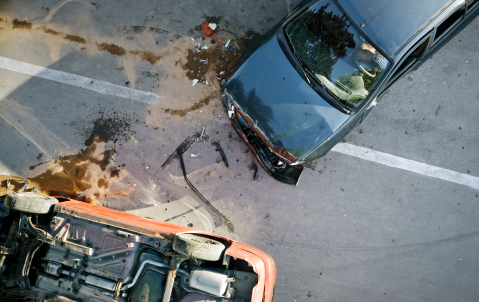
Rise in safety systems for automobile industry triggers product recall rise
Today’s latest cars are complex engineering achievements with something like 30,000 component parts, many of which make up the systems related to vehicle and passenger safety. From airbags to anti-lock brakes, some of these systems have been effective enough to be designated as required safety equipment by regulators. With new hi-tech safety features being developed at a rapid pace, the number of safety systems recognised by regulators is only set to increase with a possible? knock-on effect for the frequency of product recalls says Andy Kyle – Product Recall Underwriter for Hiscox London Market. “We’re seeing the rapid deployment of new and advanced safety devices in the automobile industry, many of which have already or soon will be likely to join the list of regulators’ designated required safety equipment. In turn, this is creating an uptick in the number of recalls as the safety systems grow in both number and complexity, and car brands become obliged by regulators to issue public recalls where previously a recall may not have been necessary.”
“We’re seeing the rapid deployment of new and advanced safety devices in the automobile industry, many of which have already or soon will be likely to join the list of regulators’ designated required safety equipment. In turn, this is creating an uptick in the number of recalls as the safety systems grow in both number and complexity, and car brands become obliged by regulators to issue public recalls where previously a recall may not have been necessary.”
Safety revolution
While car safety systems like seatbelts, airbags and anti-lock brakes have been around for decades, they are quickly being supplemented by a whole range of new systems and devices such as forward collision avoidance systems, accident data recorders, driver drowsiness and attention detection, alcohol interlocks (a breathalyser connected to a vehicle immobiliser), emergency stop signalling, and side impact protection systems. "While there are undoubted safety benefits from the increasing sophistication and automation of auto safety systems, the link between the newly re-designated systems and increased product recall is already clear” says Kyle.
"While there are undoubted safety benefits from the increasing sophistication and automation of auto safety systems, the link between the newly re-designated systems and increased product recall is already clear” says Kyle.
Recall trends for safety systems
In 2020, according to Stout’s 2021 Automotive Defect & Recall Report, there were nearly 28 million auto recalls in the US and while this was a slight reduction on previous years, the report notes that “one notable trend” was the rise in recalls for rear view and back-up cameras. In 2020, there were 14 recalls in the US relating to these cameras, affecting over three million vehicles, with software related defects blamed for almost 80% of those recalls. The report also notes that the number of recalls related to cameras has increased since US regulators listed them as required safety equipment, reflecting the previous recall trend seen with airbags once they were safety mandated for car manufacturers; a trend also experienced with electronic stability control, and anti-lock brakes. There were approaching two million cars affected by an anti-lock brake recall in 2020, reports Stout, compared to less than 500,000 in 2012 prior to anti-lock brakes becoming required safety equipment by regulators.
Manufacturing fault or cyber hack
For newer safety systems, the Stout report adds, the analysis might be “instructive” when it comes to “evaluating risks of other components transitioning to becoming safety-critical…such as lane-keeping assist, forward collision avoidance, and automatic braking.” And this could be a problem in terms of both system failure related to a manufacturing fault as well as a cyber hack, says Kyle: “These safety systems are becoming more widespread and more complex while the software required to run them often sits on top of firmware from old existing products, which can lead to unforeseen interaction issues.” But, Kyle adds, in addition to the risk of a manufactured or design fault, these new systems also have an additional threat that older safety systems are not vulnerable to. “The cyber element introduces another level of threat given many new safety systems can be vulnerable to a hack either directly or, for example, through a car’s infotainment system. It’s feasible that not only could a hacker disrupt the operation of a car but they could even take control.”
“The cyber element introduces another level of threat given many new safety systems can be vulnerable to a hack either directly or, for example, through a car’s infotainment system. It’s feasible that not only could a hacker disrupt the operation of a car but they could even take control.”
Product recall opportunity
Given the already evident rise in product recall and further potential for safety systems to cause problems for component manufacturers and the auto companies they supply, there is a clear opportunity for product recall insurers, says Kyle. “As the regulatory definition of these safety systems change, it drives demand for product recall insurance in two ways: firstly, recalls become larger and more costly events than they would have been due to the mandatory and public nature of the recall stipulated by the regulators, which also means more units are recalled. This potential liability raises awareness amongst those manufacturers who may not have bought recall cover previously.” Secondly, Kyle adds, there is an increase in contractual obligations being passed down from OEMs (original equipment manufacturers) to suppliers. “The obligations can amount to large financial sums so manufacturers are hit with the double whammy of an increased likelihood of being caught up in a recall and when that happens, a painful financial penalty accruing.”
An attractive risk?
But will insurers welcome the untested risk from much of this new safety technology? “When it comes to completely untested technology, it may not seem an attractive risk but most new safety equipment for cars has been overlaid on existing technology that is already tried and tested. It might, for example, be a case of repurposing existing sensors with new software installed to carry out a different function. Of course, the overall chance of something going wrong increases with the complexity, but we’re happy to work with manufacturers to share that risk and provide much needed balance sheet protection,” says Kyle.
"the overall chance of something going wrong increases with the complexity, but we’re happy to work with manufacturers to share that risk and provide much needed balance sheet protection,” says Kyle.




